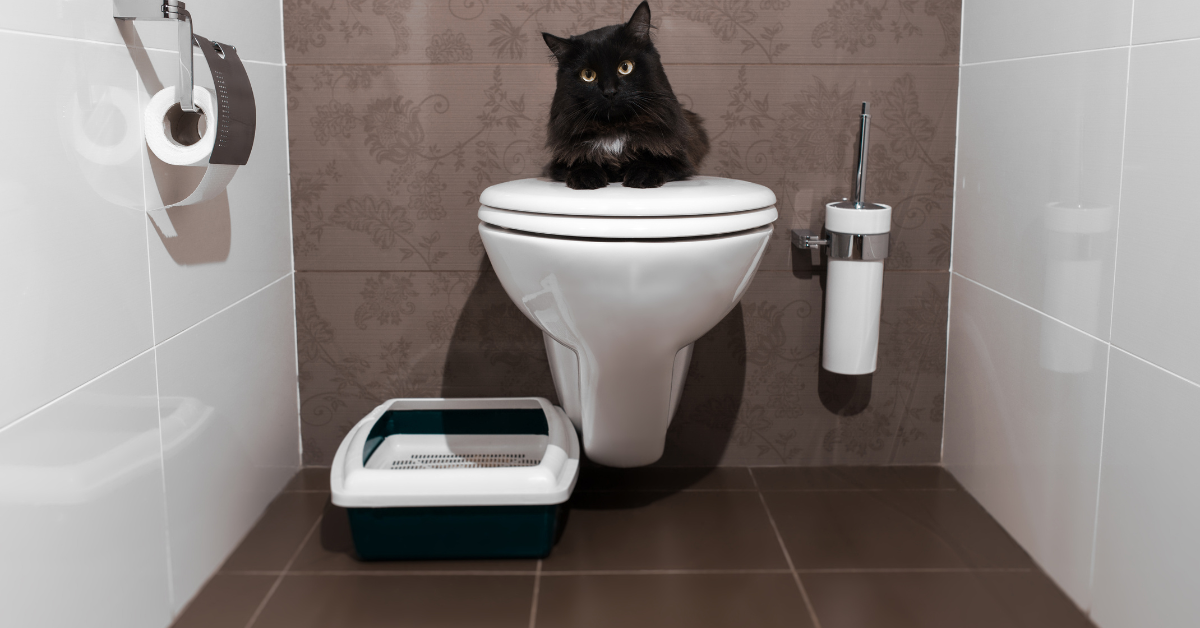Why You Should Never Flush Cat Poop Down Your Toilet - Important Facts
Why You Should Never Flush Cat Poop Down Your Toilet - Important Facts
Blog Article
Just how do you feel in relation to How to Dispose of Cat Poop and Litter Without Plastic Bags?

Introduction
As feline owners, it's vital to be mindful of how we get rid of our feline good friends' waste. While it might appear hassle-free to flush cat poop down the toilet, this method can have damaging repercussions for both the atmosphere and human wellness.
Environmental Impact
Flushing pet cat poop presents unsafe pathogens and parasites into the water supply, positioning a considerable danger to water ecological communities. These contaminants can negatively impact marine life and compromise water quality.
Wellness Risks
Along with environmental issues, flushing pet cat waste can additionally position health and wellness dangers to humans. Pet cat feces might contain Toxoplasma gondii, a bloodsucker that can create toxoplasmosis-- a possibly serious health problem, especially for expecting females and people with weakened immune systems.
Alternatives to Flushing
Fortunately, there are more secure and extra accountable methods to deal with pet cat poop. Think about the adhering to choices:
1. Scoop and Dispose in Trash
One of the most typical method of disposing of pet cat poop is to scoop it right into a biodegradable bag and toss it in the garbage. Be sure to use a committed litter inside story and throw away the waste immediately.
2. Use Biodegradable Litter
Go with naturally degradable cat clutter made from products such as corn or wheat. These clutters are environmentally friendly and can be securely thrown away in the garbage.
3. Bury in the Yard
If you have a backyard, think about hiding cat waste in a marked area far from vegetable gardens and water resources. Make certain to dig deep enough to avoid contamination of groundwater.
4. Set Up a Pet Waste Disposal System
Invest in a family pet waste disposal system specifically designed for feline waste. These systems use enzymes to break down the waste, minimizing odor and ecological influence.
Final thought
Liable animal possession extends past giving food and shelter-- it additionally involves appropriate waste management. By refraining from purging pet cat poop down the bathroom and opting for different disposal methods, we can lessen our environmental footprint and protect human health.
Why Can’t I Flush Cat Poop?
It Spreads a Parasite
Cats are frequently infected with a parasite called toxoplasma gondii. The parasite causes an infection called toxoplasmosis. It is usually harmless to cats. The parasite only uses cat poop as a host for its eggs. Otherwise, the cat’s immune system usually keeps the infection at low enough levels to maintain its own health. But it does not stop the develop of eggs. These eggs are tiny and surprisingly tough. They may survive for a year before they begin to grow. But that’s the problem.
Our wastewater system is not designed to deal with toxoplasmosis eggs. Instead, most eggs will flush from your toilet into sewers and wastewater management plants. After the sewage is treated for many other harmful things in it, it is typically released into local rivers, lakes, or oceans. Here, the toxoplasmosis eggs can find new hosts, including starfish, crabs, otters, and many other wildlife. For many, this is a significant risk to their health. Toxoplasmosis can also end up infecting water sources that are important for agriculture, which means our deer, pigs, and sheep can get infected too.
Is There Risk to Humans?
There can be a risk to human life from flushing cat poop down the toilet. If you do so, the parasites from your cat’s poop can end up in shellfish, game animals, or livestock. If this meat is then served raw or undercooked, the people who eat it can get sick.
In fact, according to the CDC, 40 million people in the United States are infected with toxoplasma gondii. They get it from exposure to infected seafood, or from some kind of cat poop contamination, like drinking from a stream that is contaminated or touching anything that has come into contact with cat poop. That includes just cleaning a cat litter box.
Most people who get infected with these parasites will not develop any symptoms. However, for pregnant women or for those with compromised immune systems, the parasite can cause severe health problems.
How to Handle Cat Poop
The best way to handle cat poop is actually to clean the box more often. The eggs that the parasite sheds will not become active until one to five days after the cat poops. That means that if you clean daily, you’re much less likely to come into direct contact with infectious eggs.
That said, always dispose of cat poop in the garbage and not down the toilet. Wash your hands before and after you clean the litter box, and bring the bag of poop right outside to your garbage bins.
https://trenchlesssolutionsusa.com/why-cant-i-flush-cat-poop/

I stumbled upon that page about Can You Flush Cat Poo or Litter Down the Toilet? when exploring the search engines. Loved our posting? Please share it. Let others discover it. Many thanks for your time. Visit again soon.
Get A Free Estimate Report this page